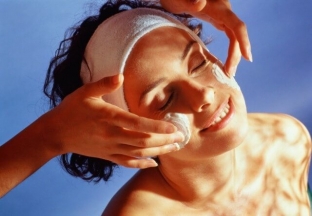Our skin has some of its own defense mechanisms against UV rays, but these mechanisms may not be enough to cope with intense sun exposure. The result of neglected care is photodamage of the skin, which leads patients to see a doctor. Most often, they treat problems of photoaging, although the doctor must also be aware of possible skin diseases that appear on sun-damaged skin. What hardware methods of skin treatment after the sun give the best effect, we will follow from estet-portal.com.
The most common skin problems after sun exposure
Because patients tend to neglect prevention photoaging before the start of the holiday season, and then they come to the cosmetologist with problems of skin photodamage, specialists constantly have to look for more and more effective, effective methods of therapy. The choice of such a technique, a therapeutic approach to solving skin problems after the sun, depends both on the signs of photoaging that have appeared, and on the nature of skin damage.
Among the most common signs of photoaging that patients present with are the following:
- flabbiness, reduced turgor,
- small and large wrinkles,
- uneven pigmentation,
- erythema, dilated vessels.
Usually, the cosmetologist suggests reducing the signs of photoaging with the help of injection procedures that have long been proven to be effective in combating photodamage to the skin. However, in some cases, hardware methods show a significantly higher efficiency.
Let's consider some therapeutic approaches using hardware cosmetology, which can effectively solve the problem of photodamage to the skin after the sun.

Hardware effects on the skin after the sun and its effectiveness
For the convenience of choosing a method of therapy for sun-damaged skin, experts divide skin photodamage into three large groups: pigmentation disorders, changes in skin relief, and reduced skin elasticity.
Pigmentary and vascular disorders that occur on the skin after excessive insolation are most common in patients in the post-holiday period. In addition, a change in skin color may be due to some dermatological diseases that were provoked by exposure to the active sun – for example, it can be solar keratosis, superficial melasma, poikiloderma, rosacea.
Photodamage to the skin is very effectively treated with phototherapy, although this statement seems paradoxical.
However, superficial pigmentation is effectively treated with BBL (Broad Band Light) and IPL (Laser Light) phototherapy. Pigmented spots are eliminated almost after the first procedure, depigmented spots become much less noticeable, skin color is generally evened out. Vascular networks require several procedures. Among the additional advantages of the procedure, patients note the effect of lifting and seboregulation.
To correct the appearance of an accentuated skin pattern that has arisen after insolation, and small static wrinkles that are not amenable to either fillers or neurotoxins, laser skin resurfacing is perfect. Total resurfacing gives the best results, but it requires a long recovery period, so often patients prefer fractional skin resurfacing.
Decrease in skin turgor after the sun, when patients complain of its dryness and flabbiness, is very effectively corrected by radiofrequency and infrared lifting. In addition, with the help of IPL therapy, the quality of the skin is significantly improved – and at the same time pigmentation problems are solved.
An excellent effect in the treatment of photodamage to the skin after the sun gives a combination of various hardware techniques – for example, phototherapy and infrared lifting, as well as their combination with injection procedures.







Add a comment